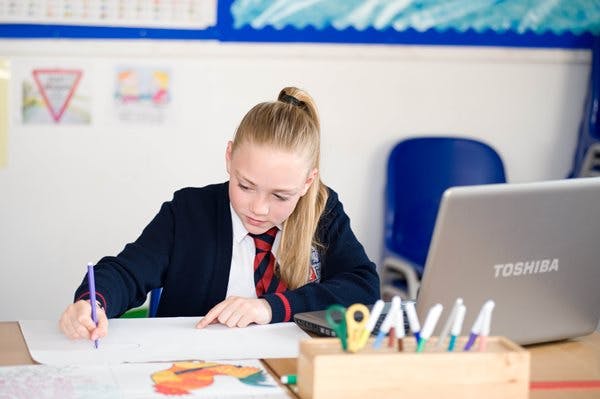Supporting EAL pupils with technology
English as an additional language learners are an increasingly significant part of our classrooms. So too, of course, is technology.
The question then is how do we marry the two and ensure we deliver effective practice with technology? How do we select tools and develop strategies for EAL pupils?
The reality is that effective practice looks the same with and without technology - it’s focused on sound pedagogy, and clear outcomes for learners. Tools and technology should be there to augment good teaching, create methods for deepening learning and understanding and be able to scaffold and support learners right where and when they need it.
If we are to aim for effective practice, we should be careful in selecting our technology tool kit, because in the case of EAL students, we need to ensure that those tools are available right in the heart of learning. They should embrace all subjects and be available across every platform. Why? Because we want pupils to be supported whenever, wherever and however they are learning.
In choosing effective technology tools upon which to build good practice for EAL pupils, there are four key areas to consider. First, ensure the tool helps with language in context. Simple support tools like dictionaries, and even more so picture dictionaries as we have in Read&Write, give support instantly and deliver context. Second, technology should provide independence. If we are to support EAL pupils we need to create a stress-free environment for learning. Tools that are there and can be used when needed help provide this. In the case of Read&Write, we have a simple toolbar that a pupil can use at anytime with freedom to select what helps them most - creating a personalised tool just for their needs. Third, consider tools that have inbuilt translation facilities - many of these are inbuilt to devices and web services. Whilst not ‘bulletproof’, used with care, they provide a valuable help mechanism that builds vocabulary and context. Fourth, ensure the technology at its heart supports building vocabulary.
Taking these four considerations, we can select the best choice of tools which should naturally then be able to underpin effective practice. Simple things like spell check and prediction while writing shouldn’t be underestimated. Text to speech in particular helps students read and understand above their reading level - whilst also improving confidence, endurance and pronunciation.
Take something like word clouds from wordle.net - a simple tool, but powerful and effective for our EAL pupils. Use it to create vocabulary references ahead of a piece of work; have pupils use it to analyse their own written work; use it for revision or even to draw opinions on genre and style of written work. Simple yet effective.
Use of podcasts, recordings or providing oral feedback is an effective way to easily integrate audio into t&l. Youtube is an incredible resource for video material to stimulate discussion around understanding, build vocabulary and create opportunities for writing stimulae.
Once these basics are understood, it becomes easier to build on these concepts and approaches to use technology even further. If you’re using video, try something like Edpuzzle or Videonot.es to stretch activities and deepen engagement and thinking. Consider iMovie or Wevideo to build creativity on top of simple writing frames.
Effective practice with technology is the same for EAL pupils as for any other pupil, we just need to be careful to select and use tools that support those specific areas of language development.
So, where do you begin? As an educator, follow our ‘BASIC’ guide: Build Independence. Allow Freedom. Start small. Identify the tech. Create Opportunity. From there you’ll see opportunities for technology, as will your pupils.
Technology should be there to enable, encourage, scaffold and support every learner. Chosen carefully and with a clear view on pupil outcomes, effective practice should be evident in our pupils' progression.
Give it a start with our own Read&Write - one toolbar, supporting EAL pupils across many of the areas we’ve written about. It’s free for teachers, so you’ve no excuse not to get started today and on your way to effective practice with technology!

